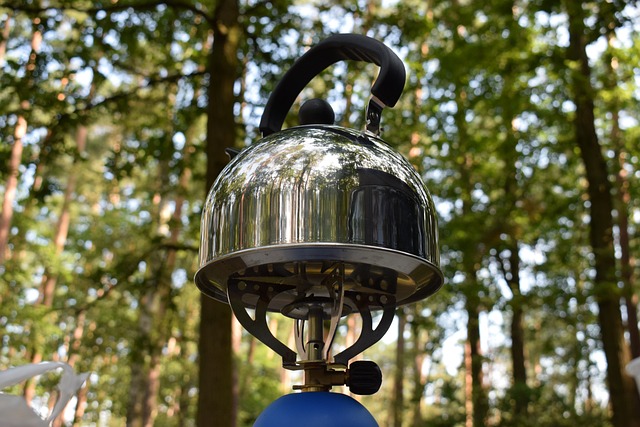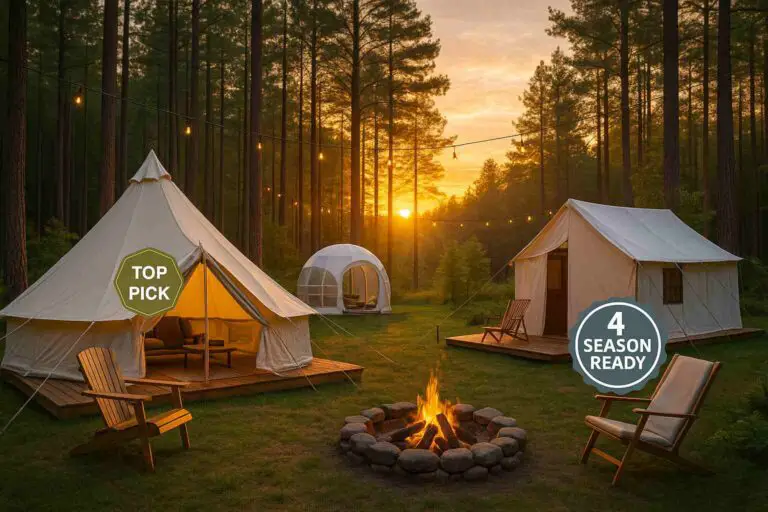Are camping stoves safe to use indoors? This is a question that many outdoor enthusiasts ask themselves when planning a camping trip or facing power outages at home. While camping stoves are designed for outdoor use, it’s not uncommon for people to use them indoors, especially during cold or inclement weather. However, using camping stoves indoors can be dangerous and even deadly if proper safety precautions are not taken.
The biggest risk of using camping stoves indoors is carbon monoxide poisoning, which can be deadly if inhaled in large quantities. Additionally, there is a risk of fire, explosion, poor ventilation, and burns.
In this post, I’ll take a closer look at the risks associated with using camping stoves indoors, the different types of camping stoves available, and the safety measures you can take to use them safely indoors.
Understanding the Different Types of Camping Stoves
When it comes to camping stoves, there are several different types to choose from, each with its advantages and disadvantages. Understanding the differences between these types can help you choose the right one for your needs and use it safely when indoors.
- Propane Stoves – Propane stoves are the most common type of camping stoves. They are fueled by propane gas and are generally easy to use and maintain. They come in different sizes, from small backpacking stoves to larger ones suitable for car camping.
- Liquid Fuel Stoves – Liquid fuel stoves, also known as white gas stoves, are another common type of camping stove. They are fueled by liquid fuel, such as white gas, kerosene, or diesel. They are often more powerful than propane stoves and can be used in extreme weather conditions.
- Solid Fuel Stoves – Solid fuel stoves use tablets or pellets made of fuel to create heat. They are lightweight and easy to carry, making them popular with backpackers. However, they can take longer to boil water and are not as powerful as liquid fuel or propane stoves.
- Wood Burning Stoves – Wood burning stoves use twigs, wood chips, and other natural materials as fuel. They are eco-friendly and do not require any fuel to be carried. However, they can be difficult to use and require more attention and maintenance than other types of camping stoves.
It’s important to note that not all camping stoves are designed for indoor use. Be sure to check the manufacturer’s instructions and specifications before using a camping stove indoors.
The Risks of Using Camping Stoves Indoors
Using camping stoves indoors can be risky and potentially dangerous. Here are some of the risks associated with using camping stoves indoors:
- Carbon Monoxide Poisoning – One of the biggest risks of using camping stoves indoors is carbon monoxide poisoning. Camping stoves produce carbon monoxide, a colorless, odorless gas that can be deadly if inhaled in large quantities. Carbon monoxide poisoning can cause symptoms such as headaches, dizziness, nausea, and fatigue. In extreme cases, it can lead to unconsciousness and even death.
- Fire and Explosion – Another risk of using camping stoves indoors is the risk of fire or explosion. Camping stoves can ignite flammable materials, such as curtains, furniture, or bedding. They can also explode if they are not used properly or if they are damaged.
- Poor Ventilation – Using camping stoves indoors can also lead to poor ventilation, which can increase the risk of carbon monoxide poisoning and other health problems. Without adequate ventilation, carbon monoxide can build up in the air, causing a dangerous situation.
- Burns – Camping stoves produce heat, and if not used properly, they can cause burns to the skin or clothing. This is especially true for children or pets, who may accidentally touch or knock over the stove.
It’s important to be aware of these risks and take appropriate safety measures when using camping stoves indoors. This includes choosing the right type of stove, following manufacturer instructions, and ensuring proper ventilation.
Tips for Using Camping Stoves Indoors Safely
To use camping stoves indoors safely, here are some tips to keep in mind:
- Choose the Right Type of Stove – Not all camping stoves are suitable for indoor use. Make sure to choose a stove that is specifically designed for indoor use or is labeled as safe for indoor use.
- Follow Manufacturer Instructions – Always read and follow the manufacturer’s instructions for your stove. This will ensure that you are using it safely and correctly.
- Use Stoves in Well-Ventilated Areas – Proper ventilation is key to using camping stoves indoors safely. Make sure to use your stove in a well-ventilated area, such as a room with open windows or a space with an exhaust fan.
- Never Leave Stoves Unattended – Never leave a camping stove unattended when it’s in use. This can increase the risk of fire or explosion.
- Keep Stoves Away from Flammable Materials – Keep your stove away from flammable materials, such as curtains, bedding, or paper. This will reduce the risk of fire or burns.
- Use Stoves on a Stable Surface – Make sure your stove is on a stable surface and cannot be knocked over easily. This will reduce the risk of burns or fire.
- Keep Children and Pets Away from Stoves – Keep children and pets away from camping stoves when they are in use. They may accidentally touch or knock over the stove, which can cause burns or fire.
If you follow these tips, you can use camping stoves indoors safely and reduce the risk of accidents or injuries.
Conclusion
Using camping stoves indoors can be risky and potentially dangerous, but it’s not uncommon to use them in certain situations. It’s important to understand the risks associated with using camping stoves indoors, such as carbon monoxide poisoning, fire and explosion, poor ventilation, and burns.
To use camping stoves indoors safely, it’s important to choose the right type of stove, follow manufacturer instructions, use stoves in well-ventilated areas, never leave stoves unattended, keep stoves away from flammable materials, use stoves on a stable surface, and keep children and pets away from stoves.
By taking these safety measures, you can use camping stoves indoors safely and enjoy a warm meal or drink even in the comfort of your home.
You might be interested in learning about glamping and its benefits.








